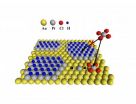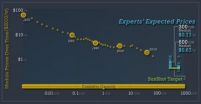(Press-News.org) INDIANAPOLIS -- Despite U.S. Food and Drug Administration regulations requiring generic medications to carry identical warnings to those on corresponding brand-name products, a study by Regenstrief Institute researchers has found that more than two-thirds of generic drugs have safety-warning labels that differ from the equivalent brand-name drug.
The investigators reviewed 9,105 product labels for over 1,500 drugs available on DailyMed, an online repository of labeling information maintained by the FDA and the National Library of Medicine. Of the 1,040 drugs with more than one manufacturer's label, 68 percent showed some discrepancies within their safety information.
The majority of generics showed relatively small differences across their labels, but nine percent showed differences of more than 10 side effects. Errors included out-of-date information, incomplete data and, in one case, information for the wrong drug altogether.
"Physicians frequently use labeling information, either directly or indirectly, to make prescribing decisions. They need to know about side effects, drug interactions and other safety issues," said Regenstrief Institute investigator Jon Duke, M.D., M.S., assistant professor of medicine at the Indiana University School of Medicine, who led the study. "We found that generic drug labels may contain incomplete or incorrect safety information. Until this problem is resolved, physicians and patients should rely on brand drug labeling only, even when the patient is getting a generic version of a drug."
Information on medication side effects are often conveyed to patients by their doctors or by pharmacists through information sheets accompanying a pharmacy purchase. These information sheets are based on the medication labels.
Safety studies are conducted by the brand name manufacturer before the medication goes on the market. The FDA does not require that the generic manufacturer duplicate these studies.
The researchers extracted drug safety data from medication labels using the Structured Product Label Information Coder and Extractor, or SPLICER, a software application created by Dr. Duke and colleagues. In a previous study, SPLICER was shown to have an accuracy of 94 percent.
"The solution to the problem of labeling inconsistency may be a centralized listing of drug side-effects, maintained independently of individual manufacturer labels. Drug labels would simply reference this common repository rather than attempting to maintain all the information within a single document. Clinicians could refer to this resource for the most up-to-date safety information regardless of generic manufacturer," Dr. Duke said.
INFORMATION:
"Consistency in the Safety Labeling of Bioequivalent Medications" has been published online in advance of print publication in the journal Pharmacoepidemiology and Drug Safety. Funding for this study was provided by the Regenstrief Institute. In addition to Dr. Duke, authors are Jeff Friedlin, D.O., formerly of the Regenstrief Institute, and Xiaochun Li, Ph.D. of the Department of Biostatistics of the IU School of Medicine.
Regenstrief study finds that generic drugs often have incorrect safety labeling
2012-12-13
ELSE PRESS RELEASES FROM THIS DATE:
Novel NIST process is a low-cost route to ultrathin platinum films
2012-12-13
A research group at the National Institute of Standards and Technology (NIST) has developed a relatively simple, fast and effective method of depositing uniform, ultrathin layers of platinum atoms on a surface.* The new process exploits an unexpected feature of electrodeposition of platinum—if you drive the reaction much more strongly than usual, a new reaction steps in to shuts down the metal deposition process, allowing an unprecedented level of control of the film thickness.
Platinum is a widely used industrial catalyst—in automobile catalytic converters and hydrogen ...
Solar power prices to continue falling through 2025, experts say
2012-12-13
Prices for solar modules—the part of solar panels that produce electricity—will continue to fall, in line with the long-term trend since 1980, according to a survey of experts by Near Zero, , a nonprofit energy research organization. However, for prices to keep falling for the long term will require continued committment to research, such as on materials used for making solar modules.
To get a sense of what future prices for solar power are likely to be, as well as other challenges and bottlenecks that the industry faces, Near Zero conducted a formal, quantitative survey ...
Tool could help uncover bias against female faculty in STEM fields
2012-12-13
A new Northwestern University study of professors in STEM fields at top research universities across the country shows that bias against women is ingrained in the workforce, despite a societal desire to believe workplace equality exists.
The quantitative study of the complete publication records of more than 4,200 professors in seven STEM fields (science, technology, engineering and mathematics) confirms that, for some disciplines, female faculty do publish fewer papers than male faculty but not for lack of talent or effort.
The researchers found the "productivity ...
Patients with family history of colorectal cancer may be at risk for aggressive form of the disease
2012-12-13
BOSTON--When people with a family history of colorectal cancer develop the disease, their tumors often carry a molecular sign that the cancer could be life-threatening and may require aggressive treatment, Dana-Farber Cancer Institute scientists report in a new study.
The finding, reported in the Journal of the National Cancer Institute, draws on data from studies that have tracked the health of tens of thousands of people over several decades. It suggests that colorectal cancer patients could one day have their tumor tissue tested for the molecular sign, and, if necessary, ...
Targeted micro-bubbles detect artery inflammation, MU study finds
2012-12-13
COLUMBIA, Mo. — Heart disease is a leading cause of death throughout the world. Doctors say that it is important to detect heart disease early before it becomes too serious. Now, researchers at the University of Missouri have found a way that they believe could help detect heart disease before it progresses too far as well as identify patients who are at risk for strokes.
In a study published in Medicine and Science in Sports and Exercise, Isabelle Masseau, an assistant teaching professor in the MU College of Veterinary Medicine, found that she could use targeted micro-bubbles ...
Delaying childbirth may reduce risk of an aggressive form of breast cancer
2012-12-13
SEATTLE – Younger women who wait at least 15 years after their first menstrual period to give birth to their first child may reduce their risk of an aggressive form of breast cancer by up to 60 percent, according to a Fred Hutchinson Cancer Research Center study. The findings, by Christopher I. Li, M.D., Ph.D., a member of the Public Health Sciences Division at Fred Hutch, are published online in Breast Cancer Research and Treatment.
"We found that the interval between menarche and age at first live birth is inversely associated with the risk of triple-negative breast ...
Hubble census finds galaxies at redshifts 9 to 12
2012-12-13
Astronomers using the NASA/ESA Hubble Space Telescope have uncovered seven primitive galaxies from a distant population that formed more than 13 billion years ago. In the process, their observations have put forward a candidate for the record for the most distant galaxy found to date (at redshift 11.9), and have shed new light on the earliest years of cosmic history. The galaxies are seen as they were when the Universe was less than 4 percent of its present age.
A team of scientists using the Hubble Space Telescope has made new observations of the Hubble Ultra Deep Field ...
Notre Dame research may have important implications for combating diabetes
2012-12-13
Research by University of Notre Dame biochemist Anthony S. Serianni is providing new insights that could have important implications for understanding and treating diabetes.
Serianni points out that biological compounds known as dicarbonyl sugars are produced inside the human body from the natural breakdown of the simple sugar, glucose. The formation of these sugars is enhanced in diabetic patients because glucose concentrations in the blood and plasma of diabetics are significantly elevated.
"We investigated, under laboratory conditions that approximate those in the ...
Too big or just right? Optimal circle of friends depends on socioeconomic conditions
2012-12-13
Some people like to have a few close friends, while others prefer a wider social circle that is perhaps less deep. These preferences reflect people's personalities and individual circumstances — but is one approach to social networks "better" than the other? New research suggests that the optimal social networking strategy depends on socioeconomic conditions.
Researchers Shigehiro Oishi of the University of Virginia and Selin Kesebir of the London Business School explore the benefits of social networking strategies in two studies published in Psychological Science, a ...
Caltech-led astronomers discover galaxies near cosmic dawn
2012-12-13
PASADENA, Calif.—A team of astronomers led by the California Institute of Technology (Caltech) has used NASA's Hubble Space Telescope to discover seven of the most primitive and distant galaxies ever seen.
One of the galaxies, the astronomers say, might be the all-time record holder—the galaxy as observed existed when the universe was merely 380 million years old. All of the newly discovered galaxies formed more than 13 billion years ago, when the universe was just about 4 percent of its present age, a period astronomers call the "cosmic dawn," when the first galaxies ...





